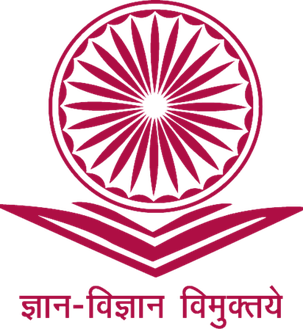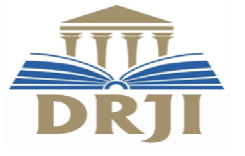INTERNATIONAL JOURNAL OF CREATIVE RESEARCH THOUGHTS - IJCRT (IJCRT.ORG)
International Peer Reviewed & Refereed Journals, Open Access Journal
IJCRT Peer-Reviewed (Refereed) Journal as Per New UGC Rules.
ISSN Approved Journal No: 2320-2882 | Impact factor: 7.97 | ESTD Year: 2013
Call For Paper - Volume 13 | Issue 11 | Month- November 2025
Scholarly open access journals, Peer-reviewed, and Refereed Journals, Impact factor 7.97 (Calculate by google scholar and Semantic Scholar | AI-Powered Research Tool) , Multidisciplinary, Monthly, Indexing in all major database & Metadata, Citation Generator, Digital Object Identifier(CrossRef DOI)
Contact Us Click Here
WhatsApp Contact Click Here
Volume 11 | Issue 1
| IJCRT Journal front page | IJCRT Journal Back Page |
Paper Title: Study and Analysis of New Three-Phase Modular Multi-Level Inverter
Publisher Journal Name: IJCRT
Your Paper Publication Details:
Published Paper ID: - IJCRT2303994
Register Paper ID - 270677
Title: STUDY AND ANALYSIS OF NEW THREE-PHASE MODULAR MULTI-LEVEL INVERTER
Author Name(s): Kumar Chinmaya Chhatoi, Anil Sethi, SatyaranjanTarai, Bikash Kumar Samal, Subrat Mohanty
Publisher Journal name: IJCRT
Volume: 11
Issue: 1
Pages: i375-i384
Year: March 2023
Downloads: 430
Abstract
this paper proposes a new three-phase modular multi-level inverter (MMLI). The proposed inverter consists of repeated modular primary cells that are connected in series configuration. Therefore, the proposed topology can be extended to get more output voltage levels by adding additional cells without increasing voltage stresses across power switches. Both sinusoidal pulse width modulation (SPWM) and staircase mod- ulation are successfully applied to the proposed inverter. The proposed inverter features many advantages such as reduced number of semiconductor power switches, driver circuits, dc- voltage sources, simplified control algorithm, and reduced volt- age stresses across the switches independent of output voltage level. Furthermore, the performance of the proposed inverter is studied under both open-loop and closed- loop operations for highly inductive load. Beside the obtained simulation results, a laboratory prototype has been carried out and tested to verify the control techniques and performances of the topology. Simulation and experimental results are compared together to highlight the similarity and consistence of them.
Licence: creative commons attribution 4.0
License
Keywords
Modular multi-level inverter, reduced dc- voltage sources count, sinusoidal pulse-width modulation
License
Paper Title: Śūnyatā and Différance: Nāgārjuna’s Middle Way, Derrida’s Deconstruction, and their Contemporary Resonances
Publisher Journal Name: IJCRT
Your Paper Publication Details:
Published Paper ID: - IJCRT2301631
Register Paper ID - 294041
Title: ŚūNYATā AND DIFFéRANCE: NāGāRJUNA’S MIDDLE WAY, DERRIDA’S DECONSTRUCTION, AND THEIR CONTEMPORARY RESONANCES
Author Name(s): Dr. Sudarsan Dash, Dr. Jayanti P. Sahoo
Publisher Journal name: IJCRT
Volume: 11
Issue: 1
Pages: f104-f114
Year: January 2023
Downloads: 55
Abstract
This paper offers a comparative philosophical study of Nāgārjuna, the second-century Buddhist thinker and founder of the Mādhyamika school, and Jacques Derrida, the twentieth-century French philosopher who developed the method of deconstruction. Both philosophers interrogate the foundations of essentialist thinking: Nāgārjuna through his doctrine of Śūnyatā and Pratītyasamutpāda (dependent origination), and Derrida through his critique of logocentrism and his concept of différance. By analysing their shared strategies of dismantling fixed categories, their rejection of intrinsic essences, and their insistence on the instability of meaning, the paper argues that Nāgārjuna and Derrida converge as non-essentialist thinkers, albeit working within different philosophical horizons. It also highlights their differences, particularly in the ethical and soteriological dimensions of Nāgārjuna’s thought vis-à-vis Derrida’s focus on textuality and undecidability. The comparative exploration shows the promise of cross-cultural philosophy in understanding deconstruction not merely as a Western phenomenon but as a global mode of thinking that destabilizes all claims to foundational certainty.
Licence: creative commons attribution 4.0
License
Keywords
Mādhyamika, Mādhyamika-śāstra, Mahāyāna Buddhism, Mūlamadhyamakakārikā, Nāgārjuna, Candrakīrti, Dignāga, Nirvāṇa, Prajñāpāramitā-sūtras, Prasannapadā, Śūnyatā, Svabhāva, Svalaksana, Śūnyavāda, Pratītyasamutpāda, Parasparapeksa Sidhih, Dharmas, Apoha-vada, Derrida, Deconstruction, Différance, Non-essentialism, Logocentrism, Double Séance, Tetrapharmakon, Trace, Binary Oppositions
License
Paper Title: A STUDY ON THE ROLE OF SATRAS IN PRESERVING VAISHNAVITE RELIGIOUS TRADITIONS IN ASSAM
Publisher Journal Name: IJCRT
Your Paper Publication Details:
Published Paper ID: - IJCRT2301630
Register Paper ID - 292417
Title: A STUDY ON THE ROLE OF SATRAS IN PRESERVING VAISHNAVITE RELIGIOUS TRADITIONS IN ASSAM
Author Name(s): Mr. Dibyajyoti Konwar
Publisher Journal name: IJCRT
Volume: 11
Issue: 1
Pages: f87-f103
Year: January 2023
Downloads: 118
Abstract
Abstract This study examines the historical evolution, cultural significance, and contemporary challenges of Satras--monastic institutions central to the Neo-Vaishnavite movement initiated by Srimanta Sankardeva in the 15th-16th century Assam. Rooted in the philosophy of Ekasarana Nama Dharma, Satras have served as centers of devotional worship, artistic expression, education, and social reform. Functioning under the guidance of the Satradhikar and sustained by the disciplined life of resident monks (bhakats), these institutions preserve sacred texts such as the Kirtan Ghoxa and Nam Ghoxa, laterally with presentation civilizations with Sattriya dance, Borgeet music, Ankia Naat plays, and Bhaona drama. Beyond religious practice, Satras have historically fostered egalitarianism, confronted caste hierarchies, promoted the Assamese language, and acted as centers of native education and ethical training. In the contemporary era, Satras face pressures from modernization, globalization, declining patronage, youth migration, and the commercialization of cultural practices. Although national and international credit of art forms like Sattriya has augmented visibility, it also risks thinning their devotional spirit. To address these tests, the study climaxes preservation strategies, including government and NGO initiatives, community engagement, addition of heritage into academic curricula, formation of digital archives, and raise of heritage tourism with protections.
Licence: creative commons attribution 4.0
License
Keywords
Satras, Vaishnavism, Srimanta Sankardeva, Assamese Culture, Religious Tradition Preservation.
License
Paper Title: A Trend Analysis of Revenue Receipts and Expenditure of the Government of Assam (2008-2022): Fiscal Growth and Sustainability Perspective
Publisher Journal Name: IJCRT
Your Paper Publication Details:
Published Paper ID: - IJCRT2301629
Register Paper ID - 290809
Title: A TREND ANALYSIS OF REVENUE RECEIPTS AND EXPENDITURE OF THE GOVERNMENT OF ASSAM (2008-2022): FISCAL GROWTH AND SUSTAINABILITY PERSPECTIVE
Author Name(s): SHAH ALOM
Publisher Journal name: IJCRT
Volume: 11
Issue: 1
Pages: f81-f86
Year: January 2023
Downloads: 168
Abstract
This study presents a comprehensive trend analysis of the revenue receipts and expenditures of the Government of Assam for the period 2008 to 2022. The objective is to examine the fiscal sustainability of the state by exploring growth trends, identifying fiscal imbalances, and establishing statistical relationships between receipts and expenditures. Using descriptive statistics, correlation, paired t-test, and regression analysis, the study evaluates the fiscal health of Assam. The analysis reveals a general upward trend in both revenue receipt and expenditure, with instances of fiscal surplus and deficit across the years. The findings suggest a strong positive correlation between revenue receipt and expenditure. However, fluctuations in the fiscal gap point towards challenges in revenue adequacy and expenditure control. Policy implications highlight the need for better fiscal planning and revenue mobilization.
Licence: creative commons attribution 4.0
License
Keywords
Fiscal Analysis, Revenue Receipt, Expenditure, Assam, Regression, Correlation
License
Paper Title: An Analytical Study on the Linguistic Development of Assam
Publisher Journal Name: IJCRT
Your Paper Publication Details:
Published Paper ID: - IJCRT2301628
Register Paper ID - 289018
Title: AN ANALYTICAL STUDY ON THE LINGUISTIC DEVELOPMENT OF ASSAM
Author Name(s): Manju Ahmed, Nasir Uddin Ahmed
Publisher Journal name: IJCRT
Volume: 11
Issue: 1
Pages: f76-f80
Year: January 2023
Downloads: 183
Abstract
This study explores the linguistic development of Assam, a region marked by rich ethnic diversity and cultural plurality. It traces the historical evolution of the Assamese language alongside the tribal and minority languages that coexist in the state. The research examines the influence of socio-cultural movements, colonial policies, and political changes on language growth and preservation. Additionally, it highlights the contemporary challenges faced by minority languages in the face of modernization and globalization. The study underscores the importance of inclusive language policies, community involvement, and technological interventions for sustaining Assam's linguistic heritage. This comprehensive analysis aims to contribute to a deeper understanding of Assam's linguistic identity and promote efforts for its preservation and development.
Licence: creative commons attribution 4.0
License
Keywords
Assamese Language, Linguistic Development, Language Preservation, Language Policy, Cultural Identity, Language and Society.
License
Paper Title: The Importance of Mathematical Logic Theory and Set Theory
Publisher Journal Name: IJCRT
Your Paper Publication Details:
Published Paper ID: - IJCRT2301627
Register Paper ID - 287211
Title: THE IMPORTANCE OF MATHEMATICAL LOGIC THEORY AND SET THEORY
Author Name(s): CRC
Publisher Journal name: IJCRT
Volume: 11
Issue: 1
Pages: f68-f75
Year: January 2023
Downloads: 237
Abstract
Mathematical Logic and Set Theory form the foundational pillars of modern mathematics, providing the necessary tools for rigorous reasoning, formal proof structures, and the development of advanced mathematical theories. This paper explores the historical evolution, fundamental concepts, and critical roles of these disciplines in shaping mathematics and its applications. We discuss their contributions to computer science, philosophy, linguistics, and theoretical physics, while also addressing contemporary challenges and extensions. Through a systematic review, this study highlights the indispensable nature of logic and set theory in both pure and applied mathematics. This paper delves into the profound and often understated significance of mathematical logic theory and set theory as the bedrock of modern mathematics. We explore their historical origins, fundamental concepts, and their pervasive influence across diverse mathematical disciplines and interdisciplinary applications. Beginning with the formalization of reasoning and the concept of collections, we demonstrate how these theories provide the necessary rigor, consistency, and universality for mathematical inquiry. From establishing the foundations of number systems and analysis to shaping the development of computer science and artificial intelligence, logic and set theory are shown to be not merely abstract constructs but essential tools for understanding and advancing scientific knowledge.
Licence: creative commons attribution 4.0
License
Keywords
Mathematical Logic, Set Theory, Formal Proofs, Axiomatic Systems, Computability, Foundations of Mathematics, Formal Systems, Proof Theory, Model Theory, Recursion Theory, Zermelo-Fraenkel Set Theory, Axiom of Choice, Continuum Hypothesis.
License
Paper Title: Data Structure and Algorithm Visualization
Publisher Journal Name: IJCRT
Your Paper Publication Details:
Published Paper ID: - IJCRT2301626
Register Paper ID - 279184
Title: DATA STRUCTURE AND ALGORITHM VISUALIZATION
Author Name(s): Mr.REVANASHIDDAYYA MALAGITTI, Mr. SIRAJDDOLA NADAF
Publisher Journal name: IJCRT
Volume: 11
Issue: 1
Pages: f63-f67
Year: January 2023
Downloads: 258
Abstract
These days, algorithms and data structures are crucial to computer science since they enable us to store, process, and analyze vast amounts of data. Several techniques are used in data structures to arrange the data. We think that seeing the minaction is the greatest method to comprehend algorithms and data structures. For a range of algorithms, we created interactive visualizations that are simple enough for the human brain to comprehend and use. The goal of this project's development is to make algorithms simply understandable to humans. Additionally, this effort improved our understanding of algorithms and data structures. Traditionally, theoretical and mathematical analysis has been used to examine data structures and algorithms. As a result, it is time-consuming, difficult to study, and lacks understanding of how an issue is applied in real life. We have created and supplied an idea, data structures, and algorithm to help teachers and students visualize data structures and algorithms with their real-world implementation.
Licence: creative commons attribution 4.0
License
Keywords
visualization, Interface, Application layer
License
Paper Title: Reforming Teacher Education: Opportunities and Challenges under NEP 2020
Publisher Journal Name: IJCRT
Your Paper Publication Details:
Published Paper ID: - IJCRT2301625
Register Paper ID - 273370
Title: REFORMING TEACHER EDUCATION: OPPORTUNITIES AND CHALLENGES UNDER NEP 2020
Author Name(s): Dr. Nilesh Kapadia
Publisher Journal name: IJCRT
Volume: 11
Issue: 1
Pages: f59-f62
Year: January 2023
Downloads: 372
Abstract
National Education Policy (NEP) 2020 has finally opened the door for the world of 21st-century education. The policy builds from the foundational principles of access, equity, quality, affordability, accountability and an inclusive education system. One of the most remarkable aspects of NEP 2020 is that it acknowledges how teachers are supposed to play various roles in the classroom. Educators are now seen as mentors and facilitators. The policy stresses teacher training focused on the needs of the socio-economically disadvantaged groups. Technology is highlighted as a vehicle to integrate into teacher education and classroom practice to improve learning outcomes. Teachers are the backbone of the education system. The implementation of NEP 2020 is an ambitious agenda, so it has many challenges. Some key recommendations are outlined below.
Licence: creative commons attribution 4.0
License
Keywords
NEP 2020, Teacher Education, Education Policy, Challenges
License
Paper Title: STAGES OF HISTORICAL RESEARCH
Publisher Journal Name: IJCRT
Your Paper Publication Details:
Published Paper ID: - IJCRT2301624
Register Paper ID - 269334
Title: STAGES OF HISTORICAL RESEARCH
Author Name(s): Dr. Shital Kumari
Publisher Journal name: IJCRT
Volume: 11
Issue: 1
Pages: f56-f58
Year: January 2023
Downloads: 391
Abstract
STAGES OF HISTORICAL RESEARCH
Licence: creative commons attribution 4.0
License
Keywords
STAGES OF HISTORICAL RESEARCH
License
Paper Title: saibar apradh se suraksha avm nyayika smadhan
Publisher Journal Name: IJCRT
Your Paper Publication Details:
Published Paper ID: - IJCRT2301623
Register Paper ID - 269195
Title: SAIBAR APRADH SE SURAKSHA AVM NYAYIKA SMADHAN
Author Name(s): Dilip Kumar
Publisher Journal name: IJCRT
Volume: 11
Issue: 1
Pages: f48-f55
Year: January 2023
Downloads: 422
Abstract
saibar apradh se suraksha avm nyayika smadhan
Licence: creative commons attribution 4.0
License
Keywords
saibar apradh se suraksha avm nyayika smadhan
License
Paper Title: Samskritavangmaye Ashwamethayagasya Vaisishtyam
Publisher Journal Name: IJCRT
Your Paper Publication Details:
Published Paper ID: - IJCRT2301622
Register Paper ID - 269156
Title: SAMSKRITAVANGMAYE ASHWAMETHAYAGASYA VAISISHTYAM
Author Name(s): DSV Jagannatha Sharma
Publisher Journal name: IJCRT
Volume: 11
Issue: 1
Pages: f44-f47
Year: January 2023
Downloads: 437
Abstract
Samskritavangmaye Ashwamethayagasya Vaisishtyam
Licence: creative commons attribution 4.0
License
Keywords
Samskritavangmaye Ashwamethayagasya Vaisishtyam
License
Paper Title: Effect of Plyometric Exercises Associated with Skill Practices on Speed of High School Volleyball Players
Publisher Journal Name: IJCRT
Your Paper Publication Details:
Published Paper ID: - IJCRT2301621
Register Paper ID - 268182
Title: EFFECT OF PLYOMETRIC EXERCISES ASSOCIATED WITH SKILL PRACTICES ON SPEED OF HIGH SCHOOL VOLLEYBALL PLAYERS
Author Name(s): Dr. Rajashekhar D. Benakanahalli
Publisher Journal name: IJCRT
Volume: 11
Issue: 1
Pages: f37-f43
Year: January 2023
Downloads: 354
Abstract
The aim of research is to determine the effect of plyometric exercises with skill practices on speed of volleyball players of high school boys. Twenty Seven subjects were randomly assigned to three equal groups of 9 subjects and they were high school Volleyball Players who were studying in schools at Vijayapur District, Karnataka, India. Three groups were assigned into Experimental Group-I (PE) acted as Plyometric Training group practicing plyometric exercises; Experimental Group-II (PESP) acted as Plyometric Training Group practicing plyometric exercises with specific skills and Group-III (CG) acted as control group. The Pre test scores on Speed as physical fitness component was conducted for all the subjects by administering 50 Meters Run Test (in seconds). Experimental groups practiced plyometric training for the period of 12 weeks. The post test mean scores of Speed was collected after the said treatments. ANOVA and ANCOVA Analysis were used to determine the significant mean scores for Speed variable. By using LSD post hoc test where the obtained F value was found significant. The level of significance was fixed at 0.05 level. The SPSS Package along with MS Excel applications were utilized to get the results for the present investigation. The findings emphasize the value of comprehensive training programs that target multiple dimensions of athletic performance in Volleyball game. Plyometric exercises, when integrated into training, can significantly enhance the speed of volleyball players of high school boys, ultimately boosting their overall effectiveness on the court. These insights are valuable for coaches and trainers aiming to optimize the performance of their athletes.
Licence: creative commons attribution 4.0
License
Keywords
Plyometric exercises, speed, volleyball, high school boys, players
License
Paper Title: Comparative Analysis of Refurbishment Material Handling in SAP PS
Publisher Journal Name: IJCRT
Your Paper Publication Details:
Published Paper ID: - IJCRT2301620
Register Paper ID - 267375
Title: COMPARATIVE ANALYSIS OF REFURBISHMENT MATERIAL HANDLING IN SAP PS
Author Name(s): PAVAN KANCHI,, ER. LAGAN GOEL,, DR.GAURI SHANKER KUSHWAHA,
Publisher Journal name: IJCRT
Volume: 11
Issue: 1
Pages: f18-f36
Year: January 2023
Downloads: 376
Abstract
Abstract This research paper explores the optimization of refurbishment material handling within the SAP Project System (SAP PS) module. The study aims to compare different strategies and techniques for managing materials during refurbishment projects to enhance efficiency, reduce costs, and improve project outcomes. By analyzing existing literature and case studies, we identify key challenges faced in material handling and propose solutions that leverage SAP PS capabilities. The paper examines various optimization methods, such as automated inventory management, real-time tracking, and integration with other SAP modules like Materials Management (MM) and Plant Maintenance (PM). A comparative analysis is conducted across multiple industries to assess the effectiveness of these strategies in diverse operational contexts. The findings highlight the potential benefits of implementing optimized material handling processes, including reduced downtime, improved resource allocation, and enhanced project control. This research contributes to the understanding of how SAP PS can be utilized to streamline refurbishment projects, offering practical insights for organizations seeking to maximize their material handling efficiency.
Licence: creative commons attribution 4.0
License
Keywords
Keywords: SAP Project System, refurbishment material handling, optimization, inventory management, real-time tracking
License
Paper Title: Fault Tolerance in Cloud Computing: Strategies to preserve data accuracy and availability in case of system failures.
Publisher Journal Name: IJCRT
Your Paper Publication Details:
Published Paper ID: - IJCRT2301619
Register Paper ID - 266511
Title: FAULT TOLERANCE IN CLOUD COMPUTING: STRATEGIES TO PRESERVE DATA ACCURACY AND AVAILABILITY IN CASE OF SYSTEM FAILURES.
Author Name(s): Dasaiah Pakanati, Pattabi Rama Rao, Om Goel, Dr Punit Goel, Dr Priya Pandey
Publisher Journal name: IJCRT
Volume: 11
Issue: 1
Pages: f8-f17
Year: January 2023
Downloads: 387
Abstract
Abstract In the realm of cloud computing, ensuring fault tolerance is paramount to maintaining the integrity and availability of data amidst hardware or software failures. As organizations increasingly migrate to cloud-based infrastructures, the reliance on robust fault tolerance mechanisms becomes indispensable. This paper delves into the multifaceted strategies employed to safeguard data within cloud environments, emphasizing methods to preserve data integrity and ensure seamless availability despite potential disruptions. Fault tolerance in cloud computing encompasses a range of techniques designed to mitigate the impact of failures on system performance and data reliability. This technique indicate that even if a particular node fail, copies of the data remain accessible from other locations, thus maintaining data availability and integrity. Additionally, distributed systems often employ techniques such as data sharding and partitioning to further enhance fault tolerance, enabling systems to manage large volumes of data efficiently and recover gracefully from localized failures. Another critical aspect of fault tolerance is error detection and correction. Advanced error detection algorithms and protocols are implemented to identify inconsistencies and anomalies in data as soon as they arise. These algorithms facilitate the automatic correction of errors, thereby preserving data accuracy and preventing corruption. Furthermore, cloud platforms leverage sophisticated monitoring and alerting systems to detect failures in real-time and initiate automatic failover procedures, which re-route traffic and operations to healthy components. The paper also explores various fault tolerance models, including active and passive replication strategies. Active replication involves processing requests simultaneously across multiple replicas, while passive replication ensures that only one replica handles requests at any given time, with others standing by to take over in case of failure. Each model offers distinct advantages and trade-offs in terms of performance and resource utilization.
Licence: creative commons attribution 4.0
License
Keywords
Keywords Fault Tolerance, Cloud Computing, Data Integrity, Data Availability, Redundancy, Replication, Distributed Systems, Data Sharding, Error Detection, Error Correction, Monitoring Systems, Failover Procedures, Active Replication, Passive Replication, Cloud Architecture
License
Paper Title: WATER MANAGEMENT OF CONSTRUCTION SITE
Publisher Journal Name: IJCRT
Your Paper Publication Details:
Published Paper ID: - IJCRT2301618
Register Paper ID - 265772
Title: WATER MANAGEMENT OF CONSTRUCTION SITE
Author Name(s): D.R. Mohapatra, Debipriya Chinmayee Jena, Angyanshree Nayak, Arasmita Dash
Publisher Journal name: IJCRT
Volume: 11
Issue: 1
Pages: f1-f7
Year: January 2023
Downloads: 409
Abstract
At prior stage water management is not considered to be vital point of planning and supervision as well, as the time passes all the possible chances of water entry in the structured is observed. As a result it seems very worst stage of existing building. Here entry of water may be from underground source, due to wrong workmanship or entryofwaterfromsurfacesource.Finalresultwillbeintheformofstructurallyweakbuilding.Forunderground water entry there are number of chances of corrosion of steel in footing portion.
Licence: creative commons attribution 4.0
License
Keywords
sustainablewatermanagementinbuildings,anaffordableapproach
License
Paper Title: REVIEW ON ANATOMY OF SCIATIC NERVE, ITS CLINICAL RELEVANCE AND ROLE OF HOMEOPATHY
Publisher Journal Name: IJCRT
Your Paper Publication Details:
Published Paper ID: - IJCRT2301617
Register Paper ID - 264818
Title: REVIEW ON ANATOMY OF SCIATIC NERVE, ITS CLINICAL RELEVANCE AND ROLE OF HOMEOPATHY
Author Name(s): Dr Hemlata Singhal
Publisher Journal name: IJCRT
Volume: 11
Issue: 1
Pages: e988-e991
Year: January 2023
Downloads: 485
Abstract
The sciatic nerve is the largest nerve in the human body arises at the lumbosacral plexus in the lower back, from the ventral rami of the L4, L5, S1, S2, S3 spinal nerves and travels posteriorly through the lower limb to reach the foot. Sciatic nerve performs both sensory and motor functions. Sciatica refers to pain that travels along the path of the sciatic nerve. The sciatic nerve may be irritated, compressed, or inflamed by several problems in the lower back, causing sciatica. Homeopathy medicines are effective way to treat sciatica pain. It not only rectifies the compression or irritation on the sciatic nerve but also helps in strengthening a patient's constitution so that the disease is cured of its roots and there are no further recurrences.
Licence: creative commons attribution 4.0
License
Keywords
Sciatic nerve, Sciatica, Tibial nerve, Common peroneal nerve, Deep Peroneal Nerve, Superficial Peroneal Nerve, Anatomy
License
Paper Title: A STUDY OF SEX STRUCTURE IN SINDHUDURG DISTRICT, MAHARASHTRA (INDIA)
Publisher Journal Name: IJCRT
Your Paper Publication Details:
Published Paper ID: - IJCRT2301616
Register Paper ID - 264885
Title: A STUDY OF SEX STRUCTURE IN SINDHUDURG DISTRICT, MAHARASHTRA (INDIA)
Author Name(s): Dr. Sudhir Murlidhar Buva
Publisher Journal name: IJCRT
Volume: 11
Issue: 1
Pages: e983-e987
Year: January 2023
Downloads: 360
Abstract
In demography we study growth of population, its distribution and characteristics, its religious and linguistic sex structure, sex ratio, age composition migration, standard of living, its economic structure etc. we also study adaption of various human groups to their respective environments in different parts of the world. Various aspects of population have been studied since long. The aim of present paper is study of sex ratio in Sindhudurg district of Maharashtra. The present research paper is based on secondary sources of data. The secondary data obtained from District census handbook, District Gazetteers, District statistical department, Socio-economic review and district statistical abstract etc. Collected data is processed and presented in the forms of tabular and graphical methods. According to revised figures of 2011 census, the total population of Sindhudurg district was 849651. Out of total population 417332 are males and 432319 are females. Thus, the sex ratio for Sindhudurg district population is 1037 (Census 2011).
Licence: creative commons attribution 4.0
License
Keywords
Sex Structure, Sex Ratio, Male, Female
License
Paper Title: Bio-Remediation of Plastic: Only harmless Way of plastic Disposal
Publisher Journal Name: IJCRT
Your Paper Publication Details:
Published Paper ID: - IJCRT2301615
Register Paper ID - 264248
Title: BIO-REMEDIATION OF PLASTIC: ONLY HARMLESS WAY OF PLASTIC DISPOSAL
Author Name(s): Dr Sunita Kumari Sharma
Publisher Journal name: IJCRT
Volume: 11
Issue: 1
Pages: e979-e982
Year: January 2023
Downloads: 319
Abstract
Plastic accumulation is now become one of the biggest threats to Planet Earth in this decade. As it is non-biodegradable and takes so many years in its natural degradation. So, its disposal becomes one of the biggest problems. Usually, for its disposal two ways are getting followed in practice. One is Incineration (Burning in furnace at higher temperature) and other dumping it for landfill. But both these ways are neither Bio-friendly or economical. Incineration of plastic pollutes the air adding Greenhouse and toxic gases while landfill makes that particular land area barren. So, in this context, only option is bio-remediation of plastic, in which plastic eating microorganisms and worms could help in getting rid of this menace. Some of the micro-organisms recognized to degrade plastic naturally are Pseudomonos, Escherichia and Bacillus genera. A newly discovered bacteria Ideonellaskaiensis has been identified to dispose plastic in 2016. Similarly, some worms have also been identified to eat plastic. This is probably one of the biggest and most essential area of research in this century. The present paper is a focus to use this biological system to make environment plastic free in an economical and bio-friendly way.
Licence: creative commons attribution 4.0
License
Keywords
Bio-Remediation, Incineration, Land-fills, Mealworms, Superworms.
License
Paper Title: A Critical Analysis of Jahangir's Relationships with Non-Sufi Saints and Their Influence on Administration
Publisher Journal Name: IJCRT
Your Paper Publication Details:
Published Paper ID: - IJCRT2301614
Register Paper ID - 253017
Title: A CRITICAL ANALYSIS OF JAHANGIR'S RELATIONSHIPS WITH NON-SUFI SAINTS AND THEIR INFLUENCE ON ADMINISTRATION
Author Name(s): Dr. Surender Kumar
Publisher Journal name: IJCRT
Volume: 11
Issue: 1
Pages: e974-e978
Year: January 2023
Downloads: 388
Abstract
Jahangir, an intellectually astute and multilingual cosmopolitan monarch, was a naturalist and scholar who investigated Hindu customs and faith. He attended Parsee and Hindu celebrations, such as the Rakhi festival and Diwali. Jahangir's sovereign and mother, Man Bai, was a Rajput princess. Guru Arjan and Akbar maintained a cordial rapport; however, Jahangir ascended to the throne subsequent to Akbar's demise. Khusrau, his eldest son, rebelled and subsequently withdrew to Punjab. On the way, he encountered Guru Arjan after being apprehended by the imperial army. Khusrau was granted 5,000 rupees by the Guru in order to meet his expenditures. Conversely, his inability to wed Har Gobind to Prithia, the senior sibling of Guru Arjan, incited hostility from Chandu Shah and Prithia. Prithia and Chandu collaborated in an effort to eliminate the Guru. His son Mihrban apprised Emperor Jahangir of the event following Prithia's demise and provided Khusrau with reassurance regarding his prospective heir to the throne. Qazis and pandits capitalised on this circumstance by asserting that the Guru had written a book in opposition to the tenets of Islam and Hinduism. Jahangir embarked on a journey to Pushkar, a highly regarded Hindu pilgrimage site renowned for its multitude of ancient and contemporary sanctuaries, one of which was the "Deohara." In exchange for sustenance, Jahangir engaged in dialogue with the Jogis of Jakhbar, who were bestowed with land in Punjab. Jahangir ruled during the reign of Gaddi Chandar Nath, a chief to whom Akbar had granted land in 1578 A.D. Jahangir encountered inquiries from his disciples, with Bhandar Nath in particular, concerning the madad-i-mash grant that had been sanctioned by the emperor. After consenting to the request, he left.
Licence: creative commons attribution 4.0
License
Keywords
Jahangir, Medival History of India, Non- Sufi Saints, Mughal Emperor.
License
Paper Title: OBSERVATION HOMES: NURTURING JUVENILE REHABILITATION UNDER THE JJ ACT
Publisher Journal Name: IJCRT
Your Paper Publication Details:
Published Paper ID: - IJCRT2301613
Register Paper ID - 251957
Title: OBSERVATION HOMES: NURTURING JUVENILE REHABILITATION UNDER THE JJ ACT
Author Name(s): Basavanagowda B P, Dr. Prakash Kanive
Publisher Journal name: IJCRT
Volume: 11
Issue: 1
Pages: e966-e973
Year: January 2023
Downloads: 1003
Abstract
Observation homes stand as pivotal institutions within the framework of the Juvenile Justice (Care and Protection of Children) Act, offering temporary shelter and rehabilitation to juveniles in conflict with the law. This article provides an in-depth exploration of observation homes, examining their role, functions, challenges, and prospects under the JJ Act. By delving into the legal framework, facilities, rehabilitation programs, and the way forward, it underscores the importance of ensuring the rights, dignity, and well-being of young offenders. Through a comprehensive understanding of observation homes, this article seeks to contribute to the discourse surrounding juvenile justice and child protection, advocating for a holistic approach that promotes the rehabilitation and reintegration of juveniles into society.
Licence: creative commons attribution 4.0
License
Keywords
Juvenile Justice, Observation Homes, Rehabilitation, reintegration
License
About IJCRT
The International Journal of Creative Research Thoughts (IJCRT) aims to explore advances in research pertaining to applied, theoretical and experimental Technological studies. The goal is to promote scientific information interchange between researchers, developers, engineers, students, and practitioners working in and around the world.
Indexing In Google Scholar, ResearcherID Thomson Reuters, Mendeley : reference manager, Academia.edu, arXiv.org, Research Gate, CiteSeerX, DocStoc, ISSUU, Scribd, and many more International Journal of Creative Research Thoughts (IJCRT) ISSN: 2320-2882 | Impact Factor: 7.97 | 7.97 impact factor and ISSN Approved. Provide DOI and Hard copy of Certificate. Low Open Access Processing Charges. 1500 INR for Indian author & 55$ for foreign International author. Call For Paper (Volume 13 | Issue 11 | Month- November 2025)
November 2025
Volume 13 | Issue 11
Last Date :
30-Nov-2025
Submit Manuscript Online Impact Factor: 7.97 Review Results : Within 02-03 Days Paper Publication : Within 02-03 Days

ISSN: 2320-2882 Impact Factor: 7.97 and ISSN APPROVED Journal Starting Year (ESTD) : 2013

ISSN: 2320-2882 Impact Factor: 7.97 and ISSN APPROVED Journal Starting Year (ESTD) : 2013

CONFERENCE PROPOSAL CONFERENCE PROCEEDINGS







































































